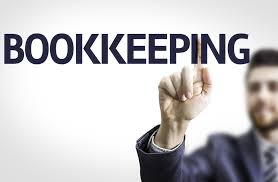What is the process of bookkeeping?
When starting in business it is good to have a bit of an idea about bookkeeping. Although you most likely will hire someone to either keep the books for you inside or outside the office, it is still important to have an overall idea about the steps taken in this process as well as an overall idea as to what is being done. There are generally five steps in the book keeping process:
- When a transaction occurs there is some original paperwork involved such as an invoice, a credit note, a receipt or petty cash voucher, etc. This original documentation must be retained and filed away where it can be easily found and referred to if necessary.
- Details from the original paperwork are recorded in the “original books of entry”.These are records such as the cash book, purchases book, sales book, petty cash book or sales returns book.
- The details written into the books of original entry are transferred to the ledger. The ledger is the main book of accounts which records all debits and credits in the business operations.
- A trial balance can be made when required by adding the debit column and adding the credit column, and comparing the two additions to determine the current state of financial affairs. If credits are greater than debits, then you are making money; but if debits are greater, you are losing money.
- The ledger is used to prepare a set of final accounts at the end of a given period…normally at the end of each financial year. These final accounts include such things as a Profit and loss account, a Balance sheet and a Trading account. These accounts may be necessary for taxation or other purposes.

What is the bookkeeping equation?
The bookkeeping equation for a sole proprietorship is assets = liabilities + owner’s equity. The bookkeeping equation for a corporation is assets = liabilities + stockholders’ equity. The bookkeeping equation is also referred to as the accounting equation.
In the bookkeeping equation:
- assets are the resources owned by the business
- liabilities are the amounts the business owes
- owner’s equity is the amount the owner invested plus the net income of the business minus the amounts the owner withdrew for personal use (all since the business began)
Often it is said that the liabilities and owner’s equity are the claims against the assets. It can also be said that the liabilities and the owner’s equity are the sources of the assets.

There is a difference between the two terms bookkeeping and accounting
- Bookkeeping is concerned with the recording of financial transactions whereas accounting involves recording, classifying and summarizing financial transactions.
- Bookkeeping is clerical in nature and usually is the junior staff performs this function whereas accounting requires skills of accountant and knowledge of various accounting policies.
- The Bookkeeping is the base for accounting. Accounting starts where the bookkeeping ends and is thus broader in scope than bookkeeping.
- Bookkeeping is in accordance with the accounting concepts and conventions. Whereas, the accounting methods and procedures for analyzing and interpreting the financial reports may vary from entity to entity.
- Financial statements do not form part of bookkeeping. Thus, these are prepared from the accounting process.
- The accounting reports help in ascertaining the financial position of an entity, however not bookkeeping records.

Relationships Between Financial Statements
Income Statement
The Income Statement is also called the Earning Statement or the Profit and Loss Statement, sometimes shortened to the P&L, but no matter what it is called, net income or loss is always the bottom line. This bottom line flows to the next statement, the Statement of Owners’ Equity. That is why it is the first statement to be compiled from the adjusted trial balance.
Statement of Owners’ Equity
The Statement of Owners’ Equity reconciles beginning capital to ending capital. Remember that the Balance Sheet shows that assets are equal to liabilities plus equity. Ending capital and equity are synonymous, so the bottom line from the Statement of Owners’ Equity, ending capital, flows to the next statement—the Balance Sheet.
Balance Sheet
Net income from the Income Statement flows to the Statement of Owners’ Equity, and the ending capital balance flows from the Statement of Owners’ Equity to the Balance Sheet.
Statement of Cash Flow
Finally, the statement of cash flows reconciles beginning cash and cash equivalents from the balance sheet (ending cash from the prior set of financial statements) to ending cash from the current balance sheet, effectively reconciling accrual basis accounting to cash basis.
Close the books
Bring the bookkeeping for the fiscal year just ended to a close and get things ready to begin the bookkeeping process for the coming fiscal year. Books is the common term for a business’s complete set of accounts. A business’s transactions are a constant stream of activities that don’t end tidily on the last day of the year, which can make preparing financial statements and tax returns challenging. The business has to draw a clear line of demarcation between activities for the year (the 12-month accounting period) ended and the year yet to come by closing the books for one year and starting with fresh books for the next year.